[ad_1]
We’ve all seen the movies where a wounded hero rips a piece of his t-shirt and ties it around a limb to use as a tourniquet. In real life, using a tourniquet this way would almost certainly result in failure and death. You need a wide tourniquet applied very tightly to stop limb bleeding.
Because of how misunderstood the tourniquet is, many health agencies have started campaigns about proper tourniquet use. This guide is our contribution to the mission.
Read on to learn about how to save a life with a tourniquet.
Why You Need Tourniquet Knowledge
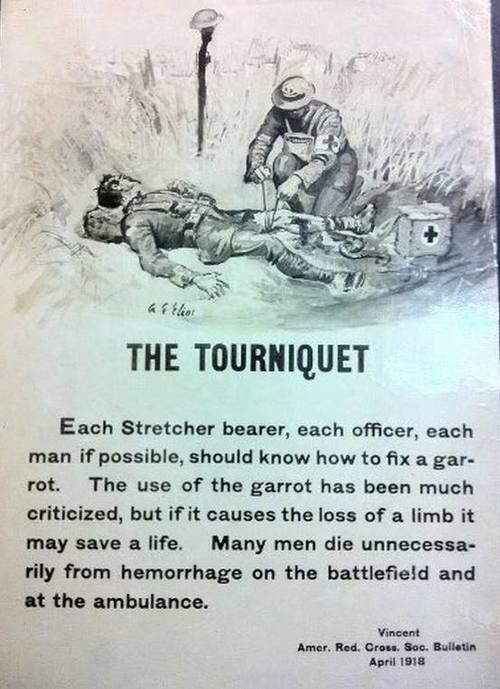
Tourniquets have been used for hundreds of years, especially by soldiers. For example, soldiers were told to carry a bandana and stick to make a tourniquet during the US Civil War.
Even with today’s medical breakthroughs, tourniquets are still integral to first aid on the battlefield. Proper tourniquet use is taught as part of TCCC (Tactical Combat Casualty Care) and is attributed to saving many soldiers’ lives.
Most of the information about how to apply a tourniquet is geared towards soldiers. You might think you don’t need to know about tourniquets if you aren’t a soldier.
But there are many everyday situations where tourniquets could save lives:
- Mass casualty events
- Vehicle collisions and accidents
- Falls
- Hiking accidents
- Knife wounds
- Shootings
For example, tourniquets saved many lives during the Las Vegas shooting. The trauma team caring for the Tree of Life synagogue victims estimates that tourniquets at the scene saved at least three lives.
Tourniquet use is so vital that public health organizations are creating awareness campaigns for the general public. In the US, the Stop the Bleed awareness campaign educates on bleeding control, and FEMA has worked to get tourniquets in more public places. In the UK, the public is also being updated with military protocols.
Don’t Tourniquets Cause Limb Damage?
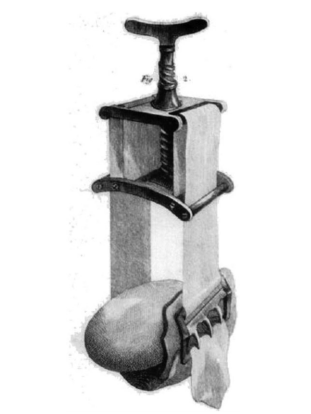
Tourniquets have been used for hundreds of years, especially by soldiers in battle. After the US Civil War, though, tourniquets lost popularity. They were blamed for complications like amputations and gangrene and thought to do more harm than good.
However, these issues were primarily because the tourniquets weren’t applied correctly or tightly enough.
For example, applying the tourniquet below the wound was common practice. Tourniquets must be used above the wound to stop blood flow. This seems obvious today but wasn’t in the past. (4)
Preventing Tourniquet Complications
Even when properly applied, tourniquets can still cause complications. These include:
- Compartment syndrome,
- Reperfusion injury when released
- Embolism
- Permanent nerve damage, muscle injury, vascular injury, skin necrosis
- Ischaemia
- Fractures
- Pain (5)
However, these complications are not likely.
One study of 68 patients found no complications from tourniquets. Another study found a 1.7% incidence of nerve palsy, no amputations, and a high survival rate.
Data shows tourniquets can be applied for up to 2 hours without concern about amputation.
To prevent complications from tourniquets, you can:
- Attempt direct pressure before applying a tourniquet.
- Use a wider tourniquet (more on this in the Choosing a Tourniquet section).
- Avoid leaving the tourniquet on for prolonged periods (more on this in the Removing a Tourniquet section)
- Do not let the patient’s discomfort dictate how you perform first aid. (6, 7)
Choose Life Over Limb
Even though some risks are associated with applying a tourniquet, they shouldn’t stop you from using one. Real-life evidence shows that early use of tourniquets saves lives.
For example, one study cited by Special Operations Medicine found that 4 of 7 soldier deaths could have been prevented with earlier tourniquet use. A different study found that patients were 9 times more likely to survive if the tourniquet was placed before the onset of shock than afterward.
When the US military started giving tourniquets to all deployed soldiers in 2005, it resulted in an 85% drop in deaths due to limb bleeding. This goes to show how effective tourniquets are at saving lives.
When push comes to shove, it’s better to save a life than a limb. The American College of Surgeons Advanced Trauma Life Support (ATLS) course manual agrees. It says:
“A properly applied tourniquet, while endangering the limb, may save a life…The risks of tourniquet use increase with time. If a tourniquet must remain in place for a prolonged period to save a life, the physician must be cognizant of the fact the choice of life over limb has been made.”
Instructions for Applying a Tourniquet
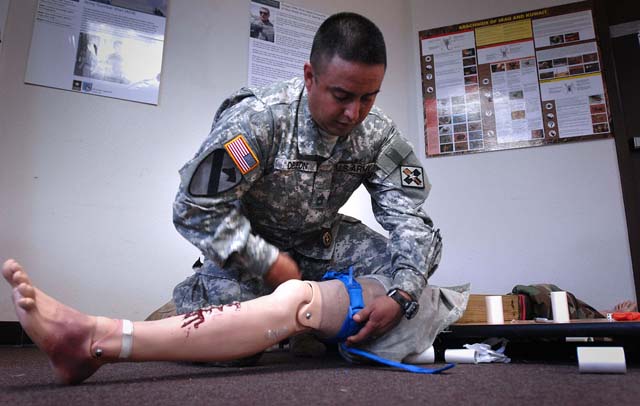
1. When Should a Tourniquet Be Used?
Use tourniquets in situations where:
- The wound is on a limb
- Direct pressure cannot control the bleeding
- When maintaining direct pressure is not possible (such as in cases where there are multiple casualties)
What if you aren’t sure whether to apply a tourniquet or not?
Research shows that tourniquets are often applied when not necessary. However, in cases where tourniquets are necessary, survival rates are much better when used early.
Thus, researchers conclude that a certain amount of over-treatment may be needed to achieve a zero miss rate for bleeding to death. In other words, it is better to play it safe. Apply the tourniquet early.
When NOT to Apply a Tourniquet
- Bleeding cannot be controlled by direct and/or indirect pressure
- Snake bites: Contrary to what you see in movies, tourniquets should NOT be used on snake bites. This can trap the venom in one spot and damage tissue. Here’s what you should do instead.
2. Wrap Around Limb
The tourniquet should go around the injured limb, approximately 2 or 3 inches above the bleeding site. Applying close to the wound minimizes the risk of tissue damage. Leave any pressure dressings in place.
Notes:
- Never apply a tourniquet over a joint. Go above the joint if necessary.
- If you aren’t sure where the wound is, or there are multiple wounds on the same limb, then apply it proximally – or high up around the limb.
- The lower arms and lower legs have two bones. It can be difficult to compress them enough to stop blood flow. Applying a tourniquet above the knee or elbow may be more effective.
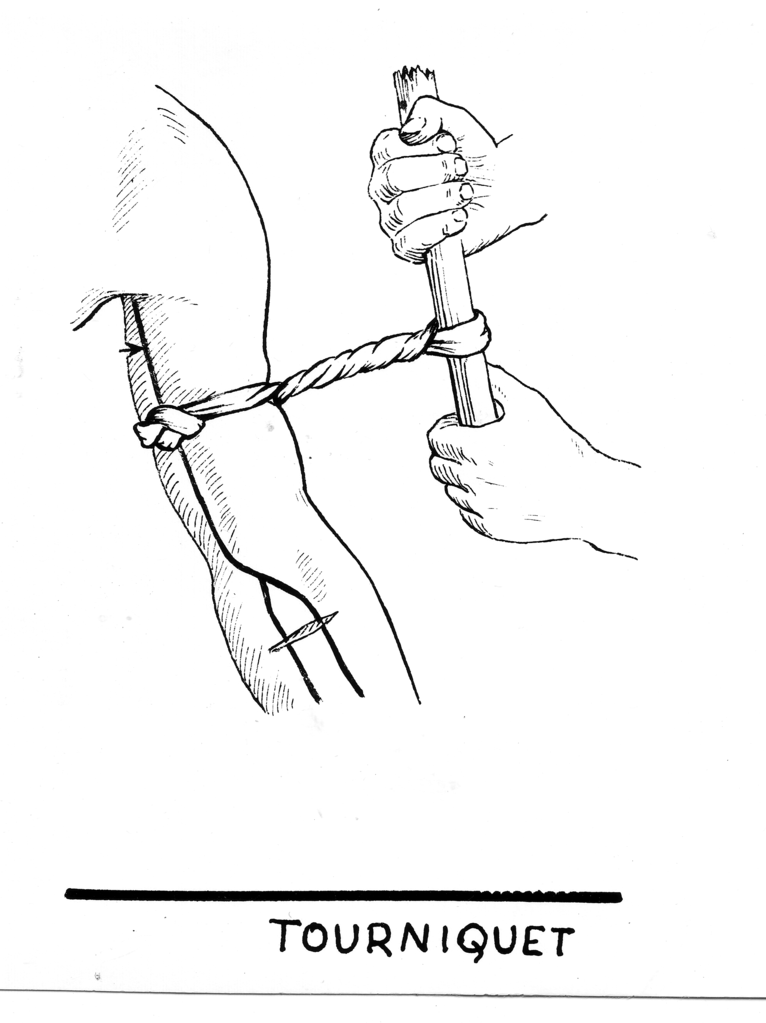
3. Tighten and Secure
Following the instructions of your tourniquet, tighten it until the bleeding stops. Secure the tourniquet in place. Do not cover the tourniquet. It should remain visible to medical responders.
4. Note the Time
Always write down the time the tourniquet was applied. This information is vital for medical responders.
A tourniquet can remain in place for approximately 2 hours with little risk of limb damage and up to 4 hours with a moderate risk of tissue damage.
5. Check the Tourniquet
The only way to know if a tourniquet is working is to check for a pulse below the tourniquet. If you can still feel a pulse, the tourniquet is not working. A second tourniquet should be applied proximal (above) the first.
Likewise, if you can still see blood flowing even after applying a tourniquet, you should use a second tourniquet proximal to it.
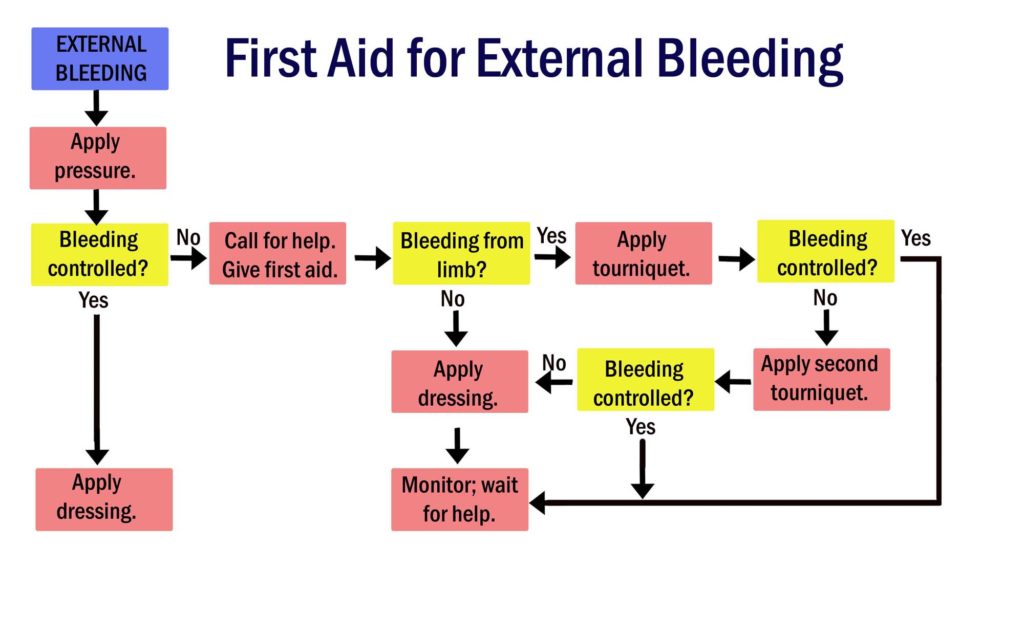
DIY and Improvised Tourniquets
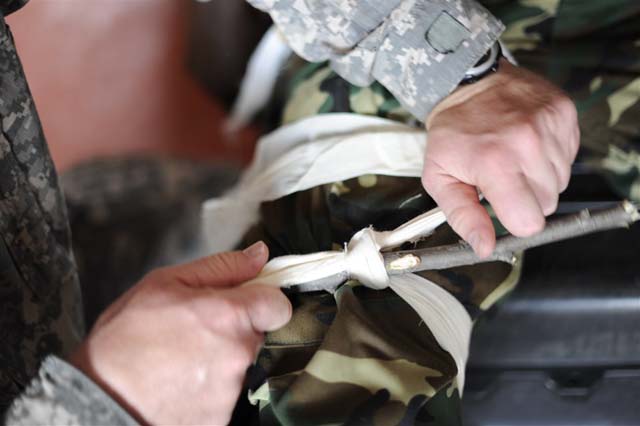
In the movies, you’ll often see impromptu tourniquets made out of a torn shirt, telephone cord, or something similar.
Unfortunately, DIY tourniquets aren’t likely to work. It’s next to impossible to block all blood flow with something like a torn shirt. Blood will continue to flow to the wound.
That doesn’t mean you shouldn’t use DIY tourniquets. A DIY tourniquet is better than nothing if you have no other option.
Impromptu Tourniquet Instructions:
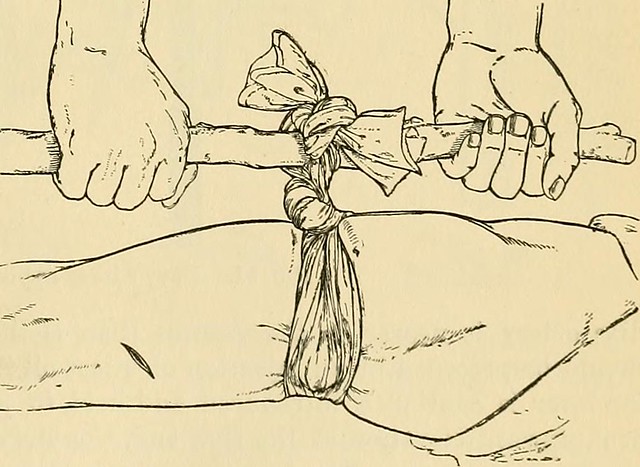
- Choose a wide, strong piece of material. A triangle bandage, scarf, or bandana will work. Avoid thin items such as phone cables if you can. Belts also will not work.
- Cross the material above the wound.
- Put a tightening rod in place. A stick or carabiner will work. Avoid items like pencils, which can easily break.
- Make a knot around the rod with the tourniquet material.
- Twist the rod. You will need to twist tightly to stop blood flow.
- Secure the rod in place. This can be done by tying another piece of material around it. Hairbands will also work.
Again, a DIY tourniquet is better than nothing. But impromptu tourniquets are very likely to fail – especially if you didn’t use a windlass rod for tightening it.
The best thing is to practice mental preparedness so you’ll be calm and ready to improvise an effective tourniquet if necessary.
Removing the Tourniquet (Conversion)
Tourniquets can remain in place for 2 hours with minimal risk of complications. At 4 hours, there is still a minimal risk of complications.
Remember, always choose life over limb. Do not remove the tourniquet. Wait for professional medical help.
What if absolutely no help is available? I mean absolutely no help, like a total doomsday SHTF situation.
After some time has passed, it is possible that enough clotting has occurred to stop the flow of blood. The tourniquet can then be removed in place of pressure dressings.
***We only mention these steps because we want people to be prepared for all situations. It is doubtful that you will ever need to remove a tourniquet.
In everyday situations, help will be available. When hiking in the middle of “nowhere,” you hopefully have a way of calling for help so medics can helicopter their way to you. Even in warfare, some help will probably be available, thanks to field doctors. Heck, war has been going on in Syria for 8+ years now. Many hospitals are shut down, but there are still heroic doctors performing brain surgery from basements…
So, I repeat: Choose life over limb. If you aren’t sure whether it is safe to remove a tourniquet, leave it in place.
Tourniquet Conversion Steps:
- Only consider removing a tourniquet when the patient has been stabilized, many hours have passed, and no professional help is available.
- Before removing the tourniquet, the wound must have been packed and had direct pressure dressings applied.
- Check to see if bleeding is under control. To do this, loosen the tourniquet slightly. See if it starts bleeding.
- If bleeding occurs, retighten the tourniquet immediately. If no bleeding occurs, then continue to loosen the tourniquet incrementally. Look for bleeding each time you loosen.
- Leave the tourniquet loosely in place above the wound. This will allow you to reapply the tourniquet quickly if necessary.
Common Tourniquet Mistakes
Should You Periodically Loosen the Tourniquet?
Tourniquets are incredibly painful for patients. However, you should never loosen the tourniquet to “give the tissue oxygen and blood.”
This will only cause the patient to bleed to death in short bursts. If no help is available and many hours have passed, you might consider removing the tourniquet. See the “Conversion” section above. But that is only for complete SHTF doomsday scenarios where there’s no chance of a trained medical professional reaching you. Otherwise, leave the tourniquet in place and keep it tight.
Free Classes
The Stop the Bleed campaign offers FREE bleeding control classes. These are in-person classes with trained instructors. You can search for a free class in your area here.
Improvised tourniquet: (U.S. Air Force Photo by Staff Sgt. Jocelyn A. Ford)
[ad_2]
Source link
